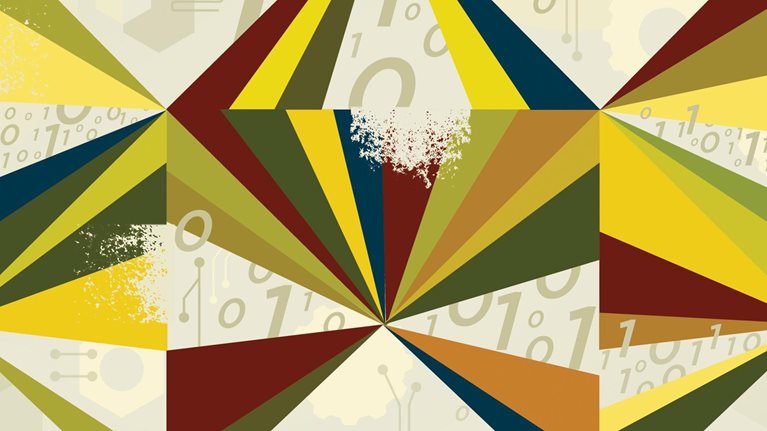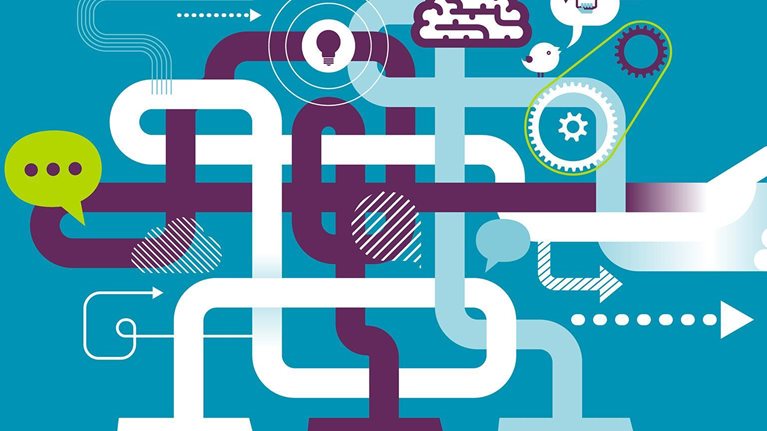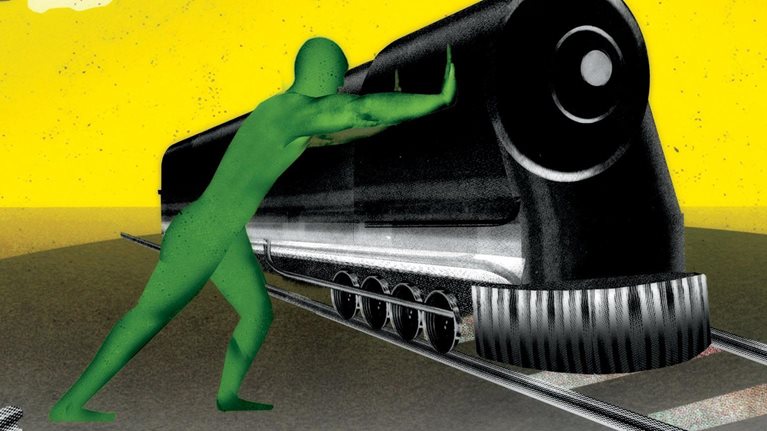Just a few years after Hyundai Card was established, Ted Chung joined the company as CEO only to find that the business was in big trouble. With the credit-card company poised to lose millions, Chung took the unusual steps of boosting employee salaries and increasing spending, including for a new $50 million advertising campaign. It paid off. He has since honed a strongly held view on the power of design to keep his brand distinctive—one that ranges from such unusual innovations as sponsoring tourist visits to his ultramodern headquarters and the new, automated credit-card “factory” to developing the company’s own unique font. In this interview with McKinsey’s Rik Kirkland, Chung, who was recently named vice chairman of Hyundai Card and Hyundai Capital, explains how crisis helped define his leadership and why he sees continually challenging the status quo as the surest way to stay on top. An extended and edited transcript of Chung’s remarks follows.
Interview transcript
Managing during crisis
Nobody wants a crisis. But, actually, the beauty of crisis, if you have to experience it, is that it speeds everything up and makes anything possible. When I joined, in 2003, the company was just two years old, and the crisis was coming because our whole industry had grown too fast and extended too many credit lines to low-quality customers. Nobody loved this company. We were just another commodity product.
So after securing 40 percent market share in new-member acquisitions for the first two years, the previous executives may have thought we were the champions. But shortly after I arrived, when I did the math, I thought at first I had made some mistake. But I ran the numbers again, and they were correct: we were set to lose $1.5 billion to $2 billion within 12 months.
I brought my blanket to the office and I slept there overnight ten times, thinking about my next step. My biggest move was that I decided not to make any cuts. Instead, I decided to spend more money to try to dramatically reposition the company and put it on a different, more profitable growth path. If I were losing $20 million or even $200 million, I would cut everything. But when you lose $2 billion, that’s different.
The key question, I realized, was that we needed to figure out what kind of credit-card company we wanted to be. After all, Amex, Citibank, Discover, may all be credit cards, but they are not in the same industry at all. My instinct, without any experience in the business, was that we needed to be a lifestyle credit-card company, more like Amex—one with a unique identity and the strongest brand loyalty. And that required a new business model.
So the next part of my plan was to increase everybody’s salary by 10 percent. Because when a company has a crisis, employees start to think, “OK, I need to update my resume.” If you want to overcome your crisis, then you need to retain your key employees. Once you lose your people, that’s it.
I also changed more than half of my executive team because some of them tried to tell me, “This is how to run a credit-card business.” When people say things like “This is the way to run a business. There’s no other way,” then that’s a problem. I called a few headhunting companies and said to them, “I want every smart brain on the street. I don’t care whether they have a credit-card background or not.”
A few months later, we invested in a $50 million campaign to launch our new credit card. We had the only credit-card advertising at that point in Korea. Many people said I was crazy. But my response was, “No. I’m spending maybe $100 million more, overall. What’s the difference between $2 billion and $2.1 billion, when you die?”
When you have a crisis, you need two plans: how to get out of it and what you plan to do after the crisis. Some people spend too much time only on the crisis. After coming out of the crisis, we were the only ones standing. When we launched our flagship card, M Card, we acquired so many new members that every month our market share grew 0.5 percent. So I developed a bad habit. Whenever I’m in trouble, I hope for another crisis!
Delivering ‘science in a Tiffany box’
Many engineers and many people will say that “we have the best product, but the marketplace does not understand that.” And they get really frustrated. Sometimes they even say it’s unfair. But I don’t think so. Because they are missing one important step: translation. Every good product should be translated into a good brand. So how do you translate your best product into the marketplace? I call that skill “delivering science in a Tiffany box.”
You have to have a good product. But that alone is not enough. Good quality and good engineering must be translated if it is to have any value in the marketplace at all. You have to make yourself distinctive—and then keep that distinction. That’s the challenge we face every day.
What Bauhaus teaches about corporate identity
People talk about seeing around corners. But if you only talk to the same people—in finance or business—you can’t see around corners. You just keep meeting everyone at the same corner. So I have two jobs. I spend maybe 8:00 AM to 6:00 PM every day working in a business environment. But at night, I try to see different people: restaurant owners, artists, fashion designers, scholars—who all have no idea about my business.
To help me and my team see other perspectives, we also organize “Insight Trips,” where we go to different places around the world and line up interesting conversation partners to have discussions. We hear someone talk about how to run a university and balance raising donations with scholarship. Or a French business executive may tell us about how they wrestle with being the most efficient company, while still running a luxury company. All this tests and challenges us to go back and translate those experiences into our company.
One of my insights is that design can be a huge weapon to make your company look cool and build brand loyalty. For us, the Bauhaus movement, on which we sponsored a big exhibition in New York at the Museum of Modern Art, is our benchmark for how to think about the role of design in expressing corporate identity, who you really are. Bauhaus started as framed art and then extended to apply design to architecture—all kinds of ordinary objects—and became almost a way of life. The lesson we drew is that design has to be three dimensional and really express who you are.
An important element of translation is visual impact. We are now living in an overflowing information age. And when you have millions and millions of pieces of information coming at you, visual design is a very powerful tool to stop you and catch your eye. It’s a powerful way to talk to you.
What’s the real lesson we have to get from Bauhaus? This is not just about making a nice-looking TV ad, which uses a small frame to communicate with the marketplace. If you apply the lessons of the Bauhaus movement, everything should be the frame. Everything should be the way you communicate. For us, we even have tourists in to visit our company. That’s another very popular tool to express ourselves. We run a design library and other kinds of space. It’s all part of expression. It’s not only what you are talking about but also the way you are and the gestures you have. And the whole thing makes one image. So we expanded to all the channels in the media so that everything makes one image. After our Bauhaus experience, we adopted a slogan: “The age of advertising is over; the age of expression is coming.”
To illustrate that, consider something as basic as the layout of the best room for a meeting. Many people can have their own definition for the best meeting room. But I always want the meeting to be in a space like the kitchen in my house. I don’t know why, maybe because my son talks to me best over the kitchen table. So the elements of the decor should be small, not too big. And then everybody should be able to walk around and make his own or her own coffee or drink, be able to move up and down and write something on the wall—so you can see white walls everywhere. And then, you know, the table should be narrow enough. I don’t really want to sit . . . apart. You know?
Changing the rules of the game
A few years ago, we launched a diagnostic project called “Day One,” where we imagined we were taken over by a private-equity firm and therefore had to challenge on day one everything that Ted and his team had done. Believe me, we discovered a lot of mistakes. But we faced them and fixed them. Return on equity and profitability have jumped since. Now, I happen to think it’s probably good to change the CEO every ten years, but since I don’t want to step down yet, I hope that by doing this I have created some additional job security for myself.
Even before we launched Day One, we had changed a lot of things over the years, but always in a line with what we have done in the past. But sometimes, you have to cut the line, throw the line out, and then jump up and create huge blank room—room enough to talk about and make very big things, big changes.
To me, innovation is a promise with my partners, the senior-executive team. Some people have worked for this company for ten years or more. And ten years ago, when this company was in trouble, we said that we would change the rules of the game in this industry. Even now, we keep talking about the new rules of the game, new possibilities for the industry. That’s why whenever we see a sleepy industry, we are so happy.
We don’t want to be most the profitable company. We don’t want to be the largest one. At the end of the day, the question we ask is: what was the impact we left behind and what kind of meaning did we have over those ten years. I think that’s also important to keep us together here.


